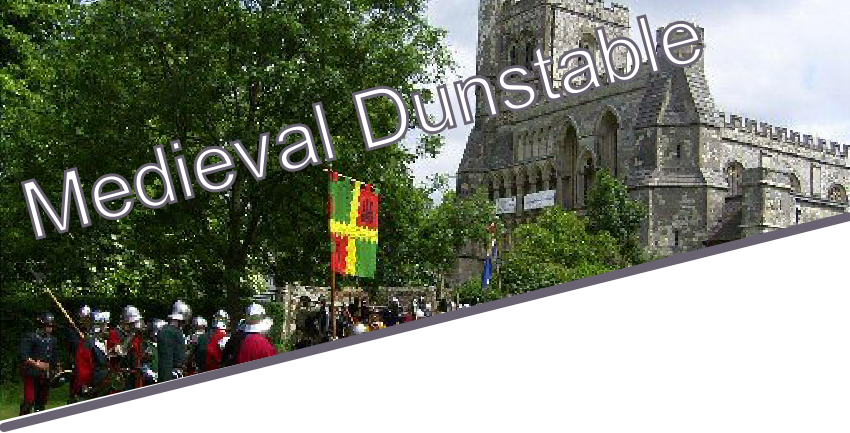
Medieval Dunstable© Webmaster Helen Mortimer Privacy Policy | Terms of Use



Education
Education
Author Christine Harrison
THE ORIGINS OF HERALDRY
In Medieval times knights had to fight for their lord and king. They would also fight to win money or land and honours. Knights practised in mock battles called jousts and mêlées.

When knights went into battle they had to be recognised by their friends or they could be killed by their own side! If the enemy could identify them they might decide not to kill them but ransom them back to their family for money!
HOW HERALDRY BEGAN
Knights began to use coloured designs and pictures to identify themselves – called a ‘device’ or coat of arms. Pictures used could have a special meaning to their family.
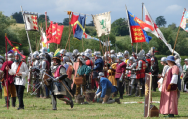
A coat of arms could be put on a shield; standard (flag); helmet; surcoat (a type of jacket that went over armour) and a horse’s trapper (a covering of cloth or leather).
HOW THE SHIELD WAS MADE UP
If a knight peeped over the top of his shield to look at the front, he would have ‘dexter’ to the right and ‘sinister’ to the left. You would see it like this:-
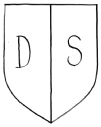
Each area of the shield had a name:
1 Dexter chief
2 Middle chief
3 Sinister chief
4 Honour point
5 Fesse point
6 Nombroil point
7 Dexter base
8 Middle base
9 Sinister base
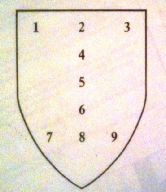
TINCTURES – COLOURS, METALS AND FURS
5 colours were used for the shield’s surface (field):
Red, blue, black, green, purple, gold and silver
They were known by old French names of
Gules, azure, sable, vert, purure, or and argent
You were not allowed to put metal on metal (gold / silver) or colour on colour if a shield was divided by a pattern
Furs: Ermine (black on white = winter coat of a stoat)
Vair (Silver or white on blue = grey squirrel).




DIVISIONS (ORDINARY CHARGES OR ORDINARIES)
The field could have lines or stripes, thick or thin.
The divisions could be painted in different colours.
Chief: Line across the top Pale: Vertical line
Bend: Diagonal from left to right Bend sinister: Diagonal from right to left
This meant the parents were not married when the son was born.

The field could have lines or stripes, thick or thin. The divisions could be painted in different colours.
Fesse: A horizontal line Chevron: Arrow point shape
Cross: Divided into four for decoration = quarterly Saltire: Another type of cross

CHARGES – PICTURE DECORATIONS
Leaves, flowers, shells, animals and mythical creatures were popular picture decorations e.g. dragon, stag, lion, acorns and wild boar, rose, griffin, swords and fish, cross, fleur-de-lys and unicorn.
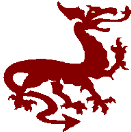
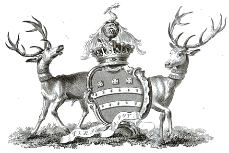
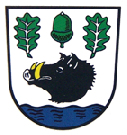
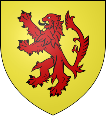
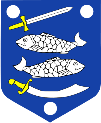
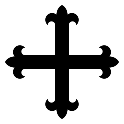
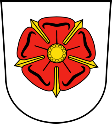
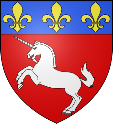
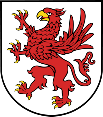
MEANINGS OF SYMBOLS OR ‘CHARGES’
Anchor = hope Holly = truth
Bear = strength, protection Horse = ready for anything
Boar = bravery Horseshoe = good luck
Bull = generosity Lion = courage
Camel = patience Otter = lives life to the full
Castle = safety Peacock = beauty, power, knowledge
Dolphin = speed & love Rainbow = good times after bad
Dragon = valour, protection Red rose = beauty
Eagle = strength, alertness Snake = wisdom
Goose = resourcefulness Swan = good learner
Griffin = strength, courage Sword = good judge
Hand = faithful, good judgement Unicorn = very, very brave
Hawk = determination White rose = faith & love
Heart = affection
MARKS OF CADENCY – WHERE YOU RANK IN THE FAMILY
Extra signs or symbols were added to family devices (shields).
1 Eldest son = label (3 tags down)
2 Second son = crescent (upwards)
3 Third son = mullet (5 point star)
4 Fourth son = martlet (bird)
5 Fifth son = annulet (ring)
6 Sixth son = fleur-de-lys (iris)
7 Seventh son = rose
8 Eighth son = cross moline
9 Ninth son = double quatrefoil (8 leaves)

Daughters have no special rights or symbols and use their father's arms on a lozenge – a diamond shape. Anne, Princess Royal, has the coat of arms below middle.
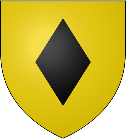
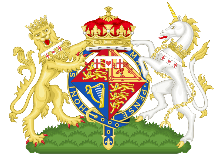
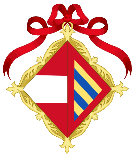
HEALDRY BECAME MORE AND MORE COMPLICATED OVER TIME
The Herald was the man who knew all about it and kept records. He worked for the king or the local baron. He would carry messages during battles to both armies fighting. After the battle he had the horrid job of working out who the dead or dying knights were.
How? By looking at their coats of arms!
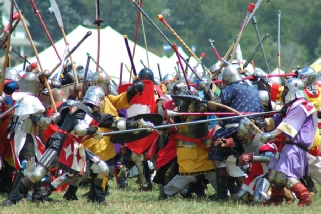
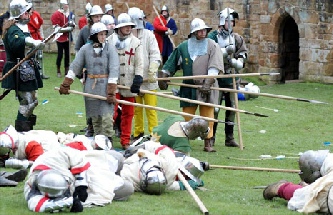
DUNSTABLE TOURNAMENTS
This is part of a Herald's Roll about Dunstable.
It is a list of who would fight in a tournament. (De la Tournay)
Knights (chevaliers) Coats of Arms (les Armes)
Two tournaments were held here in 1309 when Edward II was king.
Not many rolls have survived! His son Edward III held a Tournament here in 1334.
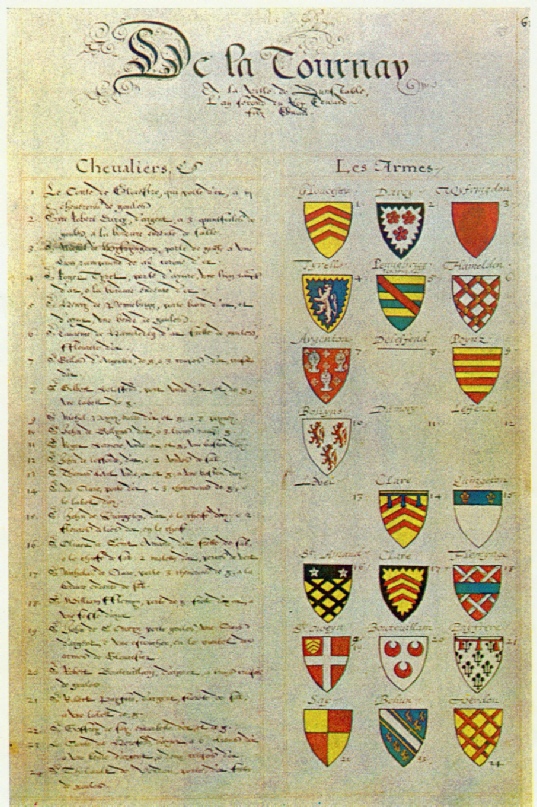
QUIZ TIME
1 Who was the man who knew all about the complicated rules of Heraldry?
2 Why did a knight wear a coat of arms?
3 Could gold and silver be put together on a shield?
4 What is the old French for gold and silver?
5 Name the 5 colours used on shields.
6 Can you name those 5 colours in old French?
7 A tournament could also be called a j…. or m….?
8 What is a device?
9 Where would you put a trapper?
10 How would you wear a surcoat?
11 What is a standard?
12 Dexter is left or right?
13 Sinister is left or right?
Design a coat of arms for your family. Add charges (pictures)
QUIZ ANSWERS
1 A Herald.
2 To be recognised in battle or tournaments.
3 Not if the shield was divided by a pattern.
4 Or and argent.
5 Red, blue, black, green, purple.
6 Gules, azure, sable, vert, purpure.
7 Another word for tournament is joust or mêlée.
8 A device is a Coat of Arms.
9 A trapper is put over the back of a horse.
10 A surcoat is worn over your body armour.
11 A standard is a banner or flag.
12 Dexter is the right.
13 Sinister is the left.
HOW WELL DID YOU SCORE? ALL CORRECT? YOU ARE AN EXPERT!
| Archaeology |
| Audio Guides |
| Education |
| Exhibitions |
| Events 2013 |
| Physic Garden |
| Priory History |
| Priory Churches / Lands |
| Town History |
| Virtual Tour |
| Website |
| Archaeology |
| Charters & Bylaws |
| Eleanor Cross |
| Famous People |
| The Fraternity |
| Friary |
| Guided Tours |
| History |
| Inns |
| Dunstable Treasures |
| Kingsbury |
| Middle Row |
| Royal Visits |
| Sheep & Wool Trade |
| The Town |
| Friary Archaeology |
| Bone Study |
| Friary |
| Annals Charters Valor Ecc |
| Archaeology |
| Churches and Lands |
| Guided Visits |
| Audio Guides |
| History |
| Monastic Life |
| Virtual Tour |
| The Augustinian Priory |
| The Canons Route |
| Bedfordshire |
| Buckingham |
| Derbyshire |
| Nothamptonshire |
| Hertfordshire |
| Leicestershire |
| Oxon |
| Priors |
| Annulment |
| History |
| Archives |
| Book Sales & Shop |
| Exhibitions |
| Guided Walks |
| Heritage Talks |
| Physic Gardens |
| Schools |
| Tourist Information Centre |
| Tea-room |
| Visits |
| Priory House Heritage Centre |
| Education |
| Knight |
| Search Results |